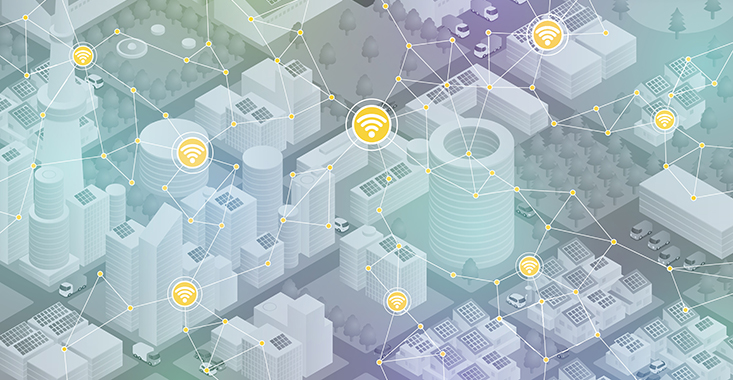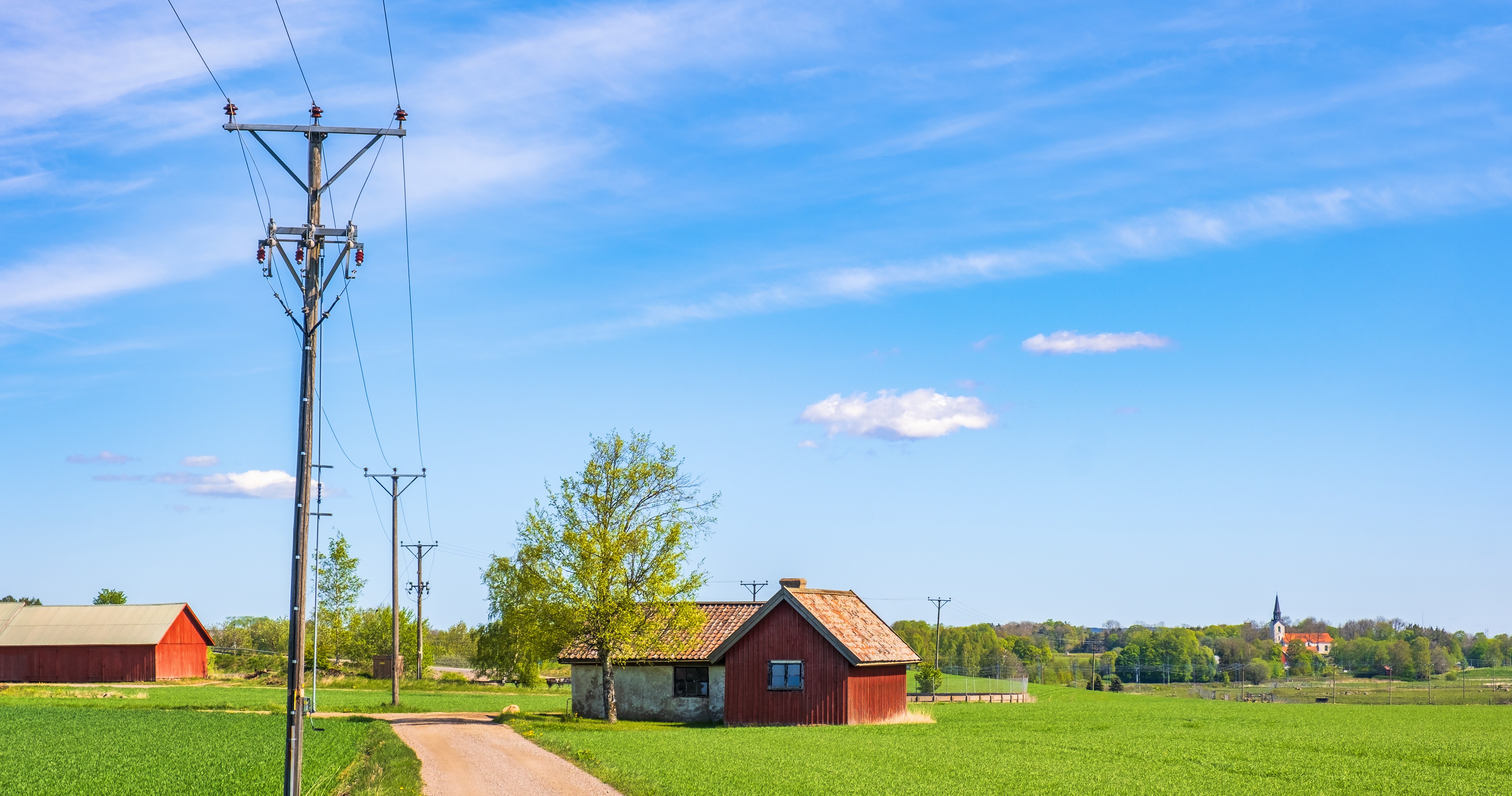A Modern, Integrated Power Grid: The Perfect Setting for Doing More and Using Less
Let's Save Energy
Alliance to Save Energy's Blog

Introduction: Characteristics of an Integrated Grid
Since the creation of the electric grid, when you flipped on your light switch, pretty much the same thing happened: a power plant somewhere in the distance sent electricity over a bunch of wires that eventually made it to your house and lit up the light bulb. The more lights you, or your city, or your state, turned on, the more power plants and wires were built. And when lights were followed by air conditioners, televisions and computers, the solution was the same: build more power plants and wires to carry more power from source to sink. (Fortunately, advances were made in energy efficiency that tamped down the demand for electricity and this really was the only way of staving off the building of more plants and more wires.) A gross simplification, yes; but one that more or less captures the one-way nature of the power grid for the entirety of the past century.
Today, all of this is in flux. While the electric grid still supplies the majority of demand from centralized power grids, new technology is changing the “balance of power” (ha!) and injecting complexity – and opportunity – into what used to be a relatively staid industry. We are moving toward an integrated grid – where consumption and efficiency can work together to generate savings and benefits; where electricity and information flow freely between multiple parties; and where demand is not passive, but informed by big data and capable of dynamically adjusting to real-time market and operational conditions. In this integrated grid, generation and efficiency assets and owners, transmission and distribution networks and operators, and responsive and flexible customers are able to coordinate their actions to move in the same direction and attain mutually-beneficial outcomes.
Energy Efficiency: The First Fuel for Integrated Grid
As with most things in the energy world, the integrated grid should start with the bedrock of efficiency and demand response (collectively demand-side management or DSM). The benefits of DSM are realized by consumers through lower bills (both from avoiding the fuel needed to make the power and the infrastructure required to deliver it), by utilities through operational opportunities (managing demand opens up new opportunities such as electrification of end-uses without risking reliability), and by the environment (reduced GHG and criteria pollutant emissions help with local and global challenges). The integrated grid multiplies opportunities for DSM for all parties, which can then be seized, and depending on market structure, capitalized or leveraged to maximize benefits.
State and federal policy makers are working with utilities and third-party providers to provide options for customers to “generate” efficiency like never before. Utility programs have rapidly accelerated the deployment of advanced lighting in households and businesses, while stronger federal codes and standards put a backstop to the efficiency of market offerings for commercial and residential use. The reverse is also true: consumers have gained more control over their energy and demand consumption thanks to innovations on the part of utilities and third party providers.
IT and communications advancements in areas such as smart grid deployment mean that utilities and consumers can be closer than ever before…if they choose. DSM can be the catalyst – the “ice breaker” –for utilities to engage consumers for mutual benefit.
Financing: The Foundation Needed to Build an Integrated Energy System
No conversation about DSM or other grid advancements goes too far without a discussion of financing. This is common in every sector of the integrated grid; solutions to its challenges, and related goals, will require huge capital deployments.
There are two issues at play: utility finance, which allows utilities to monetize DSM savings and benefits in order to access capital markets for investments in integrated grid infrastructure; and customer financing, which allows consumers to reap benefits from DSM by managing repayments on their investments. Both will have to be developed for the full vision of the integrated grid to be realized, but the structures and mechanisms will likely vary by setting and goal. As with many other modern challenges, there is no silver bullet, only silver buckshot.
Buildings-to-Grid: The Role of Buildings for the Integrated Grid
We live and work in buildings, not power plants (well, most of us!). Buildings are critical elements of all human civilizations, urban and rural, developed and developing. Today, buildings are both the nodes through which humans connect to the grid and the line of demarcation where one stops and the other starts.
True grid integration must continue past this threshold. Efficient building practices, controls technology, and material science all facilitate this integration. Knowing how we can effect this integration into buildings – and how our everyday lives are affected by it – is the essence of the integrated grid. Buildings account for 40 percent of total energy consumption, but might represent an even larger percentage of overall grid integration opportunities (over the transportation and industry sectors) as markets and services develop to meet the collective needs of utilities and consumers.
DSM is critical to controlling how much energy we use and reducing stress on grid. As we move towards the integrated grid, it will be crucial to help customers manage their energy use, and for their use to become increasingly flexible. Buildings are rapidly moving in this direction and becoming resources for the grid; controls, demand response, storage, and generation can be deployed to provide valuable resources to the distribution and bulk power networks. And in the near future, the reverse will be true also. Building owners, operators and customers expect to have more choices and more control over their energy solutions.
Grid Integration: A New Frontier in Federal Policy?
The Congress has a chance to put in place meaningful and impactful national policies that can help underpin the building of the integrated grid as it works through a House and Senate conference to craft a comprehensive energy bill. The Senate version of the bill deals with smart buildings, smart manufacturing, building energy codes, financing and the energy-water nexus – all policies that will improve efficiency and make us more energy productive. Improving efficiency and deploying DSM eases the transition into the integrated grid by making it a “lighter lift” – smaller and more stable loads require less ramping from generation resources and simplifies distribution power quality management.
But the energy efficiency provisions pending in the Congress are just the start. The Alliance is committed to working on “next big thing” in efficiency and grid integration. We already have started down this path through our work on Systems Efficiency Initiative and we are leveraging our work in the Global Alliance for Energy Productivity to take U.S. leadership to overseas audiences.
The Alliance, its Board, Associates and staff stand at the forefront of this seismic shift underway in the power sector. The Alliance serves as “an integrator”, if you will, of the people, policies, technologies and business practices that are helping to transform Thomas Edison’s grid of the 20th century into a modern and fully integrated grid for this century. And, working together, we are making that integrated grid – one that will do more while using less energy – a reality today.
STAY EMPOWERED
Help the Alliance advocate for policies to use energy more efficiently – supporting job creation, reduced emissions, and lower costs. Contact your member of Congress.
Energy efficiency is smart, nonpartisan, and practical. So are we. Our strength comes from an unparalleled group of Alliance Associates working collaboratively under the Alliance umbrella to pave the way for energy efficiency gains.
The power of efficiency is in your hands. Supporting the Alliance means supporting a vision for using energy more productively to achieve economic growth, a cleaner environment, and greater energy security, affordability, and reliability.



